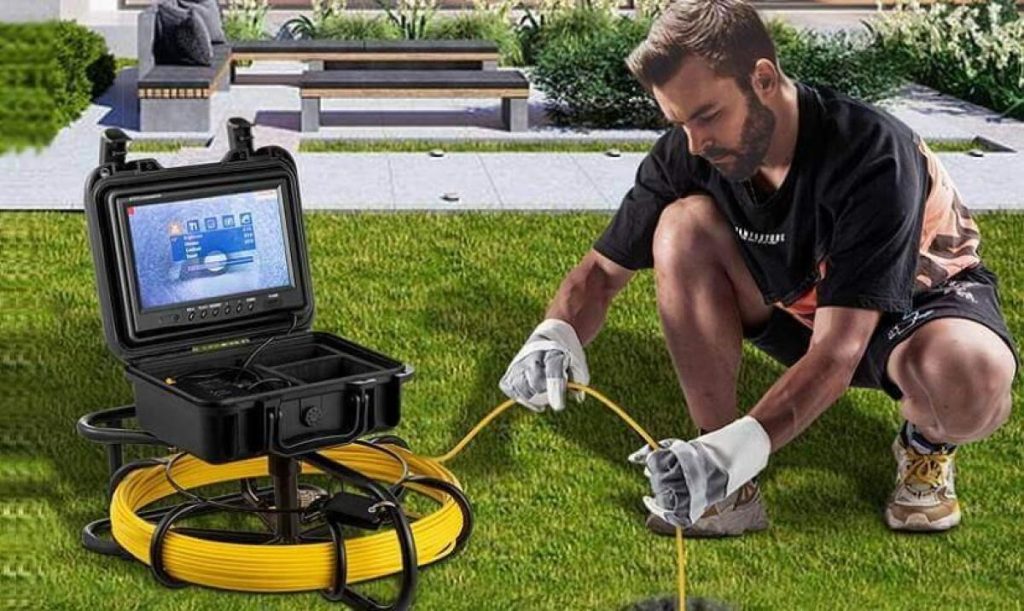When it comes to sewer line inspections, having the right equipment can mean the difference between accurate diagnostics and costly mistakes. Two of the most commonly used tools in the plumbing industry are push cameras and rigid scopes. While they serve similar purposes—identifying blockages, cracks, or corrosion in pipes—they each have unique features that make them more suitable for certain jobs. You can make a smart and cost-effective choice if you know the differences between these tools. This is especially true if you’re looking for the best cheap sewer camera.
What Is a Push Camera?
A push camera, also known as a push rod camera, is a flexible video inspection system that can navigate through long stretches of piping, typically up to 130 feet or more. It consists of a small, waterproof camera mounted on a semi-rigid cable. It shows live video on a screen, so the expert can see what’s going on inside the pipe.
These systems are ideal for longer, winding, or more complex pipelines found in residential, commercial, and municipal sewer systems. The flexibility of the rod allows it to move through bends and turns with relative ease.
What Is a Rigid Scope?
A rigid scope is a more compact, durable inspection tool used for inspecting straight or slightly curved sections of piping. It usually features a short, non-bendable shaft with a fixed camera at the end. Because of its rigid nature, it provides highly detailed images in areas where access is straightforward and limited in length.
Rigid scopes are often preferred for short inspections or in settings like industrial pipelines, HVAC systems, or specific utility lines where straight-line access is possible and high-definition imaging is crucial.
Key Differences to Consider
- Flexibility and Range
Push cameras can access long and winding sewer lines, making them the tool of choice for in-depth residential or commercial inspections. Rigid scopes, by contrast, are typically limited to short-range applications with little flexibility. - Image Quality
Both tools can offer high-resolution imaging, but rigid scopes tend to provide slightly clearer visuals due to the fixed lens position and minimal movement. However, many modern push cameras now offer HD capabilities and LED lighting, narrowing this gap. - Durability and Build
Rigid scopes often have a more robust and compact design, making them durable for industrial settings. Some damage can happen to push cameras even though they are tough, especially if they are not handled properly, especially when going long distances or over rough terrain. - Cost Efficiency
If you’re seeking the best affordable sewer camera, a push camera typically offers more value for broader applications. While rigid scopes may be cheaper upfront, their limited use can make them less cost-effective for professionals who need versatile tools. - Ease of Use
Push cameras come with monitors, recording options, and sometimes even self-leveling features, making them user-friendly despite their complexity. Rigid scopes are simple to operate but may require additional equipment for recording or display.
Which One Should You Choose?
The decision between a push camera and a rigid scope largely depends on your specific inspection needs.
- Choose a push camera if you work with long sewer lines, need to navigate tight bends, or want a versatile, all-purpose tool. Many push camera models are available today with impressive features at reasonable prices, making it easy to find the best affordable sewer camera that fits your budget and scope of work.
- Opt for a rigid scope if you’re dealing with shorter, straight pipelines or need extremely high image clarity in tight spaces. These are excellent tools for quick visual checks in industrial settings or utility lines.
Final Thoughts
Whether you’re a seasoned plumber, maintenance technician, or DIY enthusiast, choosing the right sewer inspection tool will improve your workflow and ensure accurate diagnostics. Investing in a high-quality yet cost-effective system—especially if you’re searching for the best affordable sewer camera—will pay off through faster inspections, fewer surprises, and better customer satisfaction. Compare the tools’ features and think about what your job needs in general. Then, buy a tool that will last for years.

